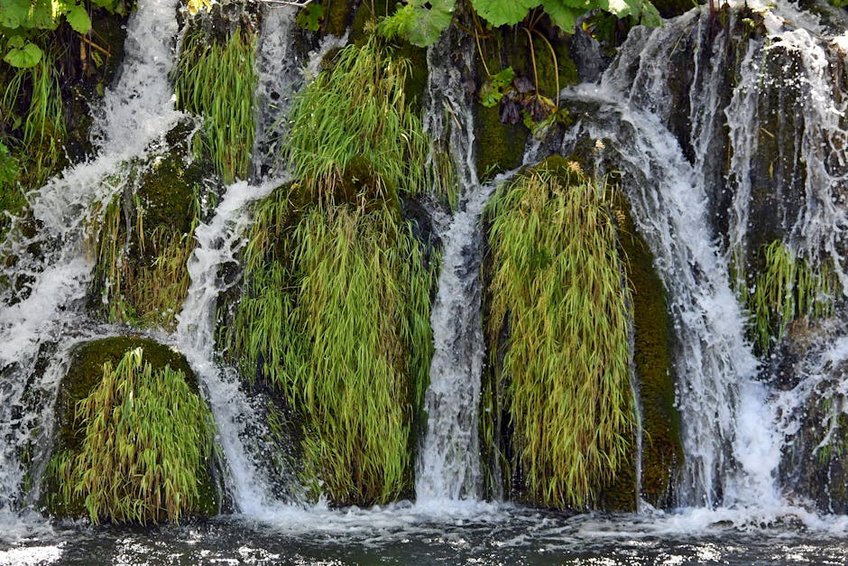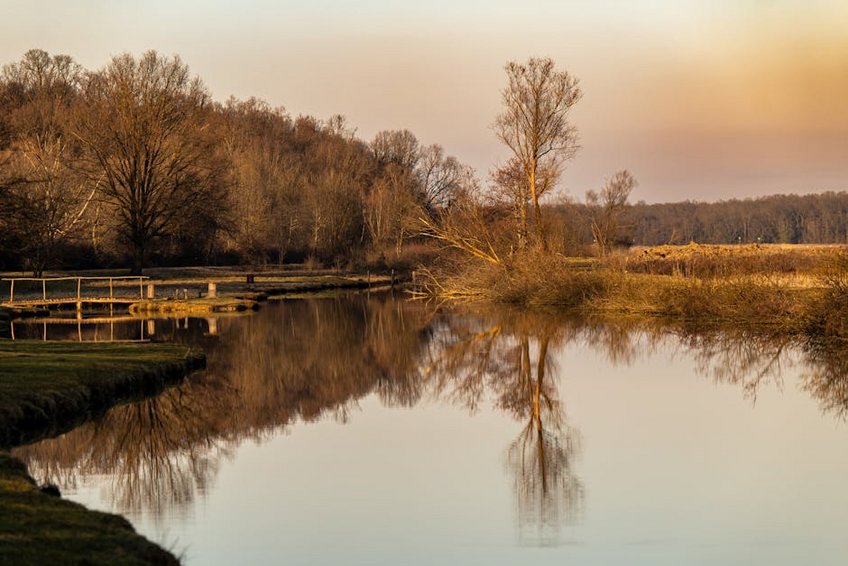Croatia Plitvice Lakes Winter Ice: Frozen Waterfall Wonderland
Visiting Croatia’s Plitvice Lakes National Park during winter offers a magical transformation where cascading waterfalls freeze into spectacular ice sculptures against snow-dusted forests. Your Croatia Plitvice Lakes winter ice adventure reveals quieter trails, crystalline formations, and photographic opportunities absent in crowded summer months. This guide covers essential planning, safety precautions, and hidden experiences for maximizing your frosty national park visit.
Plitvice Lakes National Park Essentials
Plitvice Lakes National Park encompasses sixteen terraced lakes connected by waterfalls across Croatia’s mountainous interior. UNESCO designated this area as a World Heritage site in 1979, recognizing its unique travertine formations and biodiverse ecosystems. Winter visitors discover frozen cascades, snow-covered boardwalks, and animal tracks across pristine landscapes.
The park’s elevation ranges from 400 to 1,280 meters above sea level, creating microclimates where temperatures vary significantly between lower and upper lakes. December through February brings average temperatures between 23°F (-5°C) and 37°F (3°C), with occasional dips below 14°F (-10°C) during cold snaps. Proper thermal layers and waterproof footwear become non-negotiable for comfortable exploration.
Understanding Winter Conditions
Winter transforms Plitvice’s waterfalls into intricate ice formations while partially freezing lake surfaces. The park maintains limited winter accessibility, with some upper trails closing during heavy snowfall. However, lower lake circuits remain open with enhanced safety measures and occasional guided ice walks.
- Frozen waterfalls typically form between late December and early February, depending on temperature consistency and precipitation patterns.
- Snow coverage averages 20-50 centimeters during peak winter, creating photogenic contrasts between white landscapes and turquoise unfrozen water areas.
- Daylight lasts approximately 8-9 hours, requiring early starts for optimal photography and avoiding afternoon temperature drops.
- Budget travelers can manage $35-50 daily using public transportation, self-catering accommodation, and packed lunches while staying in nearby villages like Korenica.
- Mid-range visitors spend $65-90 daily for hotel stays near park entrances, restaurant meals, and occasional guided winter photography tours.
- Luxury experiences range $120-200 daily including premium hotels with spa facilities, private guided ice tours, and fine dining with traditional Croatian cuisine.
- Plitvice Lakes National Park Official Website
- Lonely Planet Croatia Travel Guide
Park History and Significance
Croatia established Plitvice Lakes as the nation’s first national park in 1949, protecting its unique geological and hydrological systems. The park’s travertine barriers grow approximately 1 centimeter yearly through moss, algae, and bacteria interaction with mineral-rich water. This continuous formation process creates new waterfalls and lake basins over centuries.
Winter visitation represents less than 15% of annual tourist numbers, offering serene experiences compared to summer’s 10,000+ daily visitors. The park implemented sustainable tourism measures including electric boats and solar-powered facilities to preserve its pristine environment. These conservation efforts ensure future generations can enjoy the frozen wonderland.
Wildlife and Natural Features
Plitvice’s winter ecosystem supports brown bears, wolves, lynx, and over 160 bird species, though many remain hidden during colder months. Visitors might spot animal tracks in fresh snow or glimpse eagles circling above frozen lakes. The park’s biodiversity includes 1,267 plant species, with evergreen forests providing striking green contrasts against snow.
Frozen waterfalls create natural ice climbing opportunities in designated areas with professional guides. The Veliki Slap waterfall freezes into a 78-meter tall ice curtain, while smaller cascades form intricate ice caves and pillars. These formations change daily based on temperature fluctuations and sunlight exposure.
Croatia Plitvice Lakes Winter Ice – Planning Your Trip
Successful winter visits require careful timing between December and February when ice formations peak but accessibility remains manageable. Your Croatia Plitvice Lakes winter ice experience demands reservations for nearby accommodation and possible guided tours during limited daylight hours. Budget approximately $50-75 daily excluding international flights for a comfortable mid-range winter visit.
Winter park hours shorten to 8:00 AM – 4:00 PM, with last entry at 2:00 PM to ensure visitor safety before darkness. The national park authority closes upper lakes during severe weather, though lower lakes and waterfalls remain accessible throughout winter. Checking the official park website before arrival provides real-time trail conditions and any unexpected closures.
Purchase tickets online in advance during winter months, as the park limits daily entries for safety and preservation. Two-day passes cost approximately $40-50 per person, offering better value for photographers seeking different lighting conditions. Consider visiting mid-week when crowds diminish by 60% compared to weekends.
Best Time to Visit for Ice Formations
Visit Plitvice Lakes between January 10th and February 20th for the most reliable ice formations and photographic conditions. Temperatures typically range from 19°F (-7°C) to 34°F (1°C) during this period, creating stable ice structures while maintaining trail accessibility. Early January offers fresh snow coverage, while late February provides longer daylight for exploration.
December sees partial freezing with temperatures between 27°F (-3°C) and 41°F (5°C), creating mixed water-and-ice displays. March begins thawing processes, though some ice formations persist through early spring. Weekday visits during January provide optimal conditions with minimal visitor interference for photography.
Budget Planning and Costs
Winter visits cost 20-30% less than summer peak season, with better accommodation availability and pricing. Your budget should account for park entry, transportation, meals, and appropriate cold-weather gear.
Essential Preparation Checklist
Pack thermal base layers, waterproof hiking boots with ice grips, and multiple sock pairs for temperature regulation. Your gear should include hand warmers, a thermos for hot drinks, and extra camera batteries that drain faster in cold conditions. Test all equipment before departure to avoid malfunctions during critical moments.
Ensure travel insurance covers winter sports and potential weather-related cancellations, with specific coverage for Croatia’s national parks. European visitors need valid ID cards, while US passport holders require no visa for stays under 90 days. Download offline maps and the official Plitvice Lakes app for navigation without cellular service.

Alt: “plitvice-lakes-frozen-waterfalls-winter-snow-forest”
Winter Activities and Photography Opportunities
Plitvice’s winter landscape offers unique experiences from ice photography to guided snowshoe excursions through silent forests. The park’s frozen waterfalls create natural ice sculptures that change throughout the day as sunlight angles shift. Morning visits capture brilliant ice reflections, while afternoon light emphasizes texture and depth in snow-covered landscapes.
Wildlife spotting becomes more rewarding in winter, with animal tracks visible in fresh snow and fewer visitors disturbing natural behaviors. Birdwatchers might glimpse eagles, hawks, and wintering species against snow backgrounds. The park’s electric boats operate year-round, providing unique perspectives of frozen shores from unfrozen lake sections.
Must-See Frozen Waterfalls
Veliki Slap transforms into Croatia’s tallest frozen waterfall, creating a massive ice curtain visible from multiple viewpoints. The Lower Lakes circuit showcases frozen Milanovac and Gavanovac waterfalls, accessible via maintained boardwalks with safety railings. These formations appear most dramatic during morning hours when overnight freezing creates fresh ice details.
Galovački Buk waterfall freezes into intricate layered ice formations, while smaller cascades along the Upper Lakes create photographic ice tunnels. The Kozjak Lake area remains partially unfrozen, providing stunning contrasts between turquoise water and white ice formations. Visit these spots between 10 AM and 2 PM for optimal lighting conditions.
Hidden Gems and Quiet Trails
Explore the Čorkova Uvala forest trail for complete solitude and opportunities to spot wildlife tracks in untouched snow. This pathway receives minimal winter maintenance, requiring proper navigation skills and caution regarding weather conditions. The trail reveals frozen streams and intimate ice formations absent from main tourist routes.
Early morning visits to Prošćansko Lake provide misty landscapes with ice crystals forming on lakeside vegetation. The Plitvica stream area features smaller frozen cascades accessible via less-traveled pathways. These locations offer peaceful alternatives to popular viewpoints, especially during weekend periods.
Winter Photography Techniques
Use polarizing filters to reduce glare from snow and ice while enhancing color saturation in overcast conditions. Bracket exposures to capture detail in both bright snow and dark forest areas, blending images during post-processing. Include human elements for scale against massive ice formations, using colorful clothing for visual interest.
Protect camera equipment from temperature changes using insulated bags and silica gel packets to prevent condensation. Shoot during golden hour when low-angle sunlight creates long shadows and warm tones against blue ice. Experiment with long exposures to smooth water movement in partially frozen areas.
Practical Winter Travel Information
Winter transportation to Plitvice requires flexibility, as weather conditions may affect bus schedules and road accessibility. Zagreb Airport (ZAG) serves as the primary international gateway, located approximately 2 hours by car from the national park. Rental cars should include winter tires and snow chains for mountain road conditions.
Accommodation options range from budget guesthouses to luxury hotels, with many properties offering winter packages including park entry tickets. Staying within 10 kilometers of park entrances provides quicker access during limited daylight hours. Book accommodations 2-3 months in advance for January and February visits.
| Accommodation Type | Features and Location | Price Range (USD) |
|---|---|---|
| Budget Guesthouses | Family-run properties in nearby villages, shared facilities, breakfast included | $35-55/night |
| Mid-Range Hotels | Private bathrooms, restaurant access, shuttle services to park | $75-120/night |
| Luxury Resorts | Spa facilities, fine dining, guided tour packages, fireplace rooms | $150-250/night |
| Park-Affiliated Hotels | Walking distance to entrances, priority access, winter equipment rental | $100-180/night |


